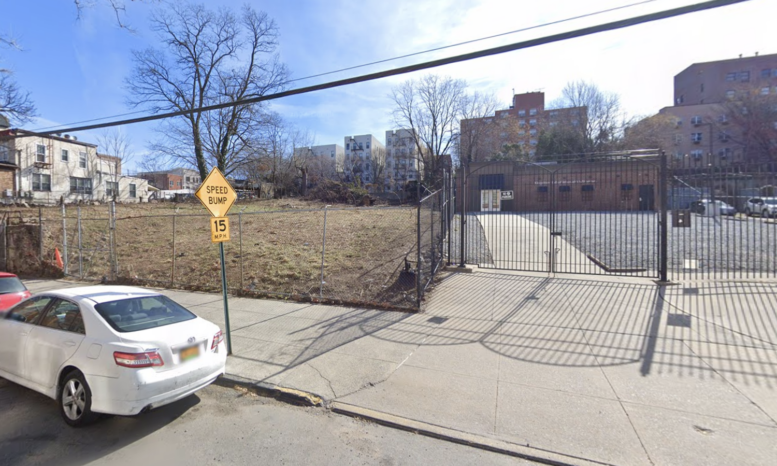President Biden is pardoning the following 11 individuals:
Jason Hernandez – McKinney, Texas
Offense: Conspiracy to possess with intent to distribute controlled substances; possession with intent to distribute cocaine base (two counts); possession with intent to distribute, and distribution of, methamphetamine; possession with intent to distribute methamphetamine/cocaine hydrochloride; distribution of a controlled substance within 1,000 feet of a school (three counts); establishing a place for the manufacture and distribution of a controlled substance (two counts); Eastern District of Texas
Sentence: 240 months in prison (as commuted on Dec. 19, 2013); eight years of supervised release; $3,500 fine (as amended by order of Feb. 29, 2016); Oct. 2, 1998
Beverly Denise Holcy, also known as Beverly Canty – Palatka, Florida
Offense: Knowingly, willfully, and intentionally distributing a quantity of cocaine base, commonly known as “crack”; Middle District of Florida
Sentence: 60 months in prison; four years of supervised release; $1,000 fine; June 22, 1994
Jeffrey Alan Lewis – Douglasville, Georgia
Offense: Use of a communication facility to facilitate a felony; Eastern District of Virginia
Sentence: Six months in prison; one year of supervise release; Feb. 17, 2006
Bobby Darrell Lowery – Jackson, Mississippi
Offense: Possession of cocaine base with intent to distribute; felon in possession of a firearm; Northern District of Mississippi
Sentence: 60 months in prison (as amended on Oct. 4, 2000, Sept. 21, 2001, Oct. 3, 2001, and Oct. 11, 2002); five years of supervised release; May 28, 1999
Jesse Mosley, also known as Jessie Mosley – Ponchatoula, Louisiana
Offense: Conspiracy to distribute cocaine; use of a communication facility in furtherance of a drug offense; Eastern District of Louisiana
Sentence: 28 months in prison; five years of supervised release; June 20, 2001
Katrina Polk – Washington, D.C.
Offense: Conspiracy to distribute crack cocaine; Southern District of West Virginia
Sentence: One day in prison; four years of supervised release; July 5, 1988
Glenn Ray Royal Jr. – San Antonio, Texas
Offense: Conspiracy to manufacture, distribute, and possess with intent to distribute cocaine and cocaine base; Western District of Texas
Sentence: 30 months in prison; four years of supervised release; $500 fine; May 23, 1996
Alexis Sutton – New Haven, Connecticut
Offense: Conspiracy to possess with intent to distribute, and to distribute, a mixture and substance containing a detectable amount of heroin; District of Connecticut
Sentence: 48 months of probation; Feb. 25, 2014
Ricky Donnell Tyler, also known as Rick Tyler – Columbia, South Carolina
Offense: Conspiracy to possess with intent to distribute and to distribute cocaine and cocaine base; possession with intent to distribute and distribution of cocaine base (three counts); District of South Carolina
Sentence: Time served (as amended on Aug. 17, 1999, and June 15, 2007); five years of supervised release; Sept. 12, 1996
Stacy L. Wilder – Albany, New York
Offense: Conspiracy to possess and distribute cocaine base; Northern District of New York
Sentence: 70 months in prison; five years of supervised release; Jan. 7, 2003
Pilar Alejandra Yelicie-Rodriguez – Fairfax, Virginia
Offense: Conspiracy to possess with intent to distribute five kilograms or more of cocaine and 50 grams or more of cocaine base; Eastern District of Virginia
Sentence: 42 months in prison (as amended on May 11, 2007); three years of supervised release; Sept. 23, 2004
President Biden is commuting the sentences of the following five individuals:
Daequon Charles Davis – Johnson City, Tennessee
Offense: Conspiracy to distribute or to possess with intent to distribute 280 grams or more of cocaine (Eastern District of Tennessee).
Sentence: 262 months in prison; 10 years of supervised release (July 13, 2017).
Commutation Grant: Sentence commuted to a term of 120 months, leaving intact and in effect the 10 years of supervised release with all its conditions and all other components of the sentence.
Jophaney Hyppolite – Miami
Offense: Conspiracy to possess with intent to distribute more than 280 grams cocaine base; distribution and aiding and abetting the distribution of cocaine base (Middle District of Florida).
Sentence: Life in prison; 10 years of supervised release (Jan. 22, 2013).
Commutation Grant: Sentence commuted to a term of 360 months in prison, leaving intact and in effect the 10 years of supervised release with all its conditions and all other components of the sentence.
Xavier Martez Parnell – Clarksville, Tennessee
Offense: Conspiracy to distribute and possess with intent to distribute controlled substances, including 500 grams or more of cocaine and 280 grams or more of cocaine base (Middle District of Tennessee).
Sentence: 300 months in prison; 10 years of supervised release (Sept. 18, 2012).
Commutation Grant: Sentence commuted to a term of 210 months, leaving intact and in effect the 10 years of supervised release with all its conditions and all other components of the sentence.
Leshay Nicole Rhoton – Bristol, Tennessee
Offense: Conspiracy to possess with the intent to distribute 280 grams or more of cocaine base and 5 kilograms or more of cocaine (Western District of Virginia).
Sentence: 240 months in prison; 10 years of supervised release (Sept. 5, 2013).
Commutation Grant: Sentence commuted to a term of 150 months in prison, leaving intact and in effect the 10 years of supervised release with all its conditions and all other components of the sentence.
Margaret Ann Vandyke – Ellenville, New York
Offense: Conspiracy to possess with intent to distribute a controlled substance (crack cocaine) (Northern District of New York).
Sentence: 60 months in prison; three years of supervised release (Jan. 19, 2022).
Commutation Grant: Sentence commuted to expire on Aug. 22, leaving intact and in effect the three years of supervised release with all its conditions and all other components of the sentence.


